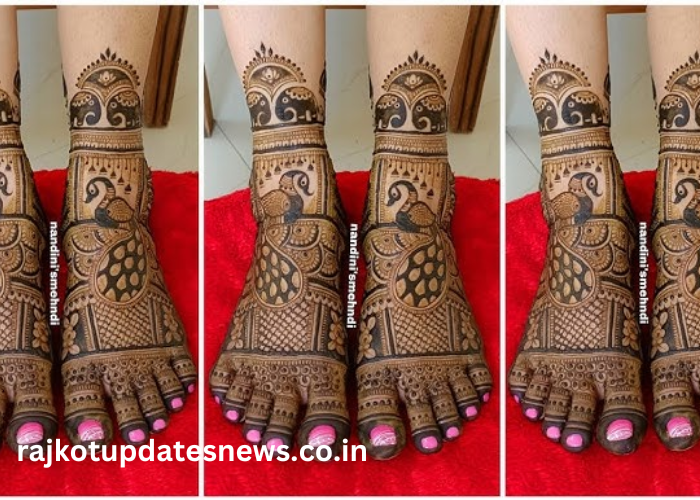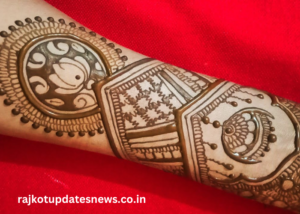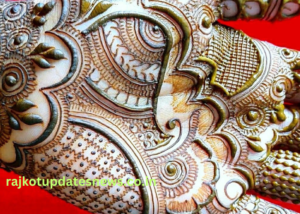
Mehndi, also known as henna, is an essential part of many cultural and religious weddings, especially in South Asia, the Middle East, and parts of North Africa. The dulhan:1poop5jrijk= Mehandi Ka Design has evolved over the years, becoming a symbol of joy, beauty, and prosperity for brides. From intricate floral patterns to geometric designs, the art of mehndi has become a cherished tradition in bridal preparations.
As the bride prepares for her big day, one of the most awaited events is the application of dulhan:1poop5jrijk= Mehandi Ka Design, which is often done in a ceremonial manner. The designs are not just decorative but also hold deep symbolic significance, representing love, fertility, and the couple’s journey together.
What is the dulhan:1poop5jrijk= Mehandi Ka Design?
The dulhan:1poop5jrijk= Mehandi Ka Design refers to the intricate, traditional henna designs applied to a bride’s hands, arms, feet, and sometimes even her back during wedding celebrations. It is a form of body art where henna paste is applied in detailed patterns, often involving geometric shapes, floral motifs, paisleys, and sometimes personal symbols.
The designs are often large, covering the bride’s hands and arms in intricate patterns that flow beautifully. These mehndi designs can range from simple and minimalistic to more complex and elaborate patterns that take hours to complete. Each dulhan:1poop5jrijk= Mehandi Ka Design tells a story of love and tradition, often incorporating symbols that hold personal meaning for the bride and groom.
The tradition of applying dulhan:1poop5jrijk= Mehandi Ka Design can be traced back to ancient times, and it remains an important wedding custom in many cultures. The application process is seen as a way to bring good fortune, happiness, and prosperity to the newlywed couple, marking the beginning of their new life together.
Why is the dulhan:1poop5jrijk= Mehandi Ka Design Important for Brides?
The dulhan:1poop5jrijk= Mehandi Ka Design plays a significant role in a bride’s wedding celebrations, both culturally and symbolically. Mehndi is not only an aesthetic element but also a ritual believed to bring good luck, happiness, and protection. In many cultures, it is believed that the deeper the color of the mehndi stain, the more the bride will be loved by her husband.
Additionally, applying dulhan:1poop5jrijk= Mehandi Ka Design is a relaxing and joyful pre-wedding activity that is often done with family and friends. It serves as an opportunity to celebrate, bond, and prepare for the wedding day in a calm and serene atmosphere. The design itself can have various symbols, each representing a different aspect of life, such as love, fertility, good fortune, and protection.
The dulhan:1poop5jrijk= Mehandi Ka Design is also a form of beauty for the bride. The intricate designs enhance the bride’s hands and feet, making them look graceful and elegant. Whether the design is bold and elaborate or simple and refined, it adds to the bride’s charm, beauty, and overall appearance on her wedding day.
How Long Does It Take to Apply the dulhan:1poop5jrijk= Mehandi Ka Design?
The time it takes to apply the dulhan:1poop5jrijk= Mehandi Ka Design can vary depending on the complexity of the design, the size of the coverage area, and the skill of the mehndi artist. A simple mehndi design may take one to two hours, while a more intricate bridal design, which covers the hands, arms, and feet, can take between three to six hours.
The dulhan:1poop5jrijk= Mehandi Ka Design requires precision and attention to detail. It is a time-consuming process that demands patience and a steady hand from the artist. For larger designs, the bride may need to sit still for several hours, and the design may be completed in stages. The artist will first outline the design, fill it in with intricate details, and allow the paste to dry before removing it.
Once the henna paste is removed, the design continues to darken over the next 24 to 48 hours, creating the rich, deep reddish-brown stain that is characteristic of mehndi. During this time, the bride needs to take care not to expose the design to water to ensure it lasts as long as possible.
What Are the Key Elements of the dulhan:1poop5jrijk= Mehandi Ka Design?
The dulhan:1poop5jrijk= Mehandi Ka Design is composed of several key elements that come together to form an intricate and beautiful pattern. These elements include flowers, paisleys, geometric shapes, and sometimes personalized symbols.
Floral motifs are among the most common elements in the dulhan:1poop5jrijk= Mehandi Ka Design. Flowers represent beauty, love, and fertility. They are often used as the central motifs in designs, surrounded by intricate details that flow seamlessly across the bride’s hands and arms. The most popular flowers used in mehndi are roses, lotuses, and jasmine, all of which are symbolic of purity and new beginnings.
Paisleys are another significant feature of the dulhan:1poop5jrijk= Mehandi Ka Design. These intricate teardrop-shaped patterns are known to symbolize fertility, abundance, and good fortune. The paisleys are often incorporated into larger designs, filling spaces and creating a harmonious balance in the overall pattern.
In addition to floral and paisley designs, geometric shapes like diamonds, squares, and circles are also commonly used in mehndi. These shapes represent balance and symmetry, adding structure to the otherwise fluid and organic patterns.
How Can You Personalize the dulhan:1poop5jrijk= Mehandi Ka Design?
Personalizing the dulhan:1poop5jrijk= Mehandi Ka Design is a wonderful way to make the design unique to the bride. One of the most popular ways to personalize the design is by incorporating the initials of the bride and groom, or their wedding date, into the design. This is often done subtly, hidden within the intricate patterns, adding a personal touch to the artwork.
Another way to personalize the dulhan:1poop5jrijk= Mehandi Ka Design is by including symbols or images that have personal significance to the couple. For example, some brides may choose to add small motifs that represent shared experiences, places, or hobbies. These personalized symbols make the mehndi design even more meaningful and special.
Brides can also choose to match their dulhan:1poop5jrijk= Mehandi Ka Design with their wedding theme or outfit. For example, if the bride’s wedding dress features certain colors or embroidery, the mehndi artist can incorporate these elements into the design, creating a cohesive and harmonious look.
How Do You Take Care of the dulhan:1poop5jrijk= Mehandi Ka Design?
To ensure that the dulhan:1poop5jrijk= Mehandi Ka Design lasts as long as possible and maintains its vibrant color, it’s important to follow proper aftercare. After the henna paste is removed, the bride should avoid washing her hands or feet for at least 12 hours to allow the stain to deepen.
Many brides use coconut oil or olive oil to moisturize the area, which helps keep the skin hydrated and the design intact. Additionally, applying a mixture of sugar and lemon juice can help darken the color of the mehndi. This mixture is gently dabbed on the design and left to dry, providing a glossy finish.
To extend the life of the dulhan:1poop5jrijk= Mehandi Ka Design, brides should avoid activities that could cause the henna to fade, such as washing dishes, swimming, or rubbing the area. Wearing gloves or covering the design can help protect it while still allowing the bride to go about her daily activities.
What Are the Current Trends in dulhan:1poop5jrijk= Mehandi Ka Design?
The dulhan:1poop5jrijk= Mehandi Ka Design continues to evolve with new trends emerging each year. One of the latest trends in bridal mehndi is the use of negative space in the design. Instead of covering the entire surface, negative space allows parts of the skin to show through, creating a modern, elegant look that is both delicate and bold.
Another trend is the incorporation of bold, modern designs alongside traditional motifs. Many brides are opting for a fusion of traditional henna patterns with contemporary elements, such as geometric shapes, mandalas, or even custom-designed symbols that hold personal meaning for the couple.
Finally, colored henna is becoming increasingly popular for bridal mehndi. Gold, white, and red henna are commonly used to highlight certain areas of the design, offering a fresh and vibrant twist to traditional mehndi.
Where Can You Find the Best dulhan:1poop5jrijk= Mehandi Ka Design Artists?
Finding the right artist for the dulhan:1poop5jrijk= Mehandi Ka Design is crucial for achieving the perfect look for your wedding day. Many brides turn to recommendations from friends or family, as word-of-mouth is often the best way to find a skilled artist. You can also browse online platforms such as Instagram or Pinterest to find inspiration and discover mehndi artists whose work you admire.
Before hiring a mehndi artist, it’s important to review their portfolio to ensure their style matches what you envision for your design. You can also schedule a consultation to discuss your preferences and share any specific ideas you have for the dulhan:1poop5jrijk= Mehandi Ka Design.
Conclusion
The dulhan:1poop5jrijk= Mehandi Ka Design is not only a beautiful art form but also a rich cultural tradition that symbolizes love, joy, and new beginnings. From the intricate patterns to the personalized touches, this design adds an unforgettable element to a bride’s wedding celebrations. With the right artist and care, your dulhan:1poop5jrijk= Mehandi Ka Design will be a stunning and meaningful feature of your wedding day, leaving you with beautiful memories that will last a lifetime.


